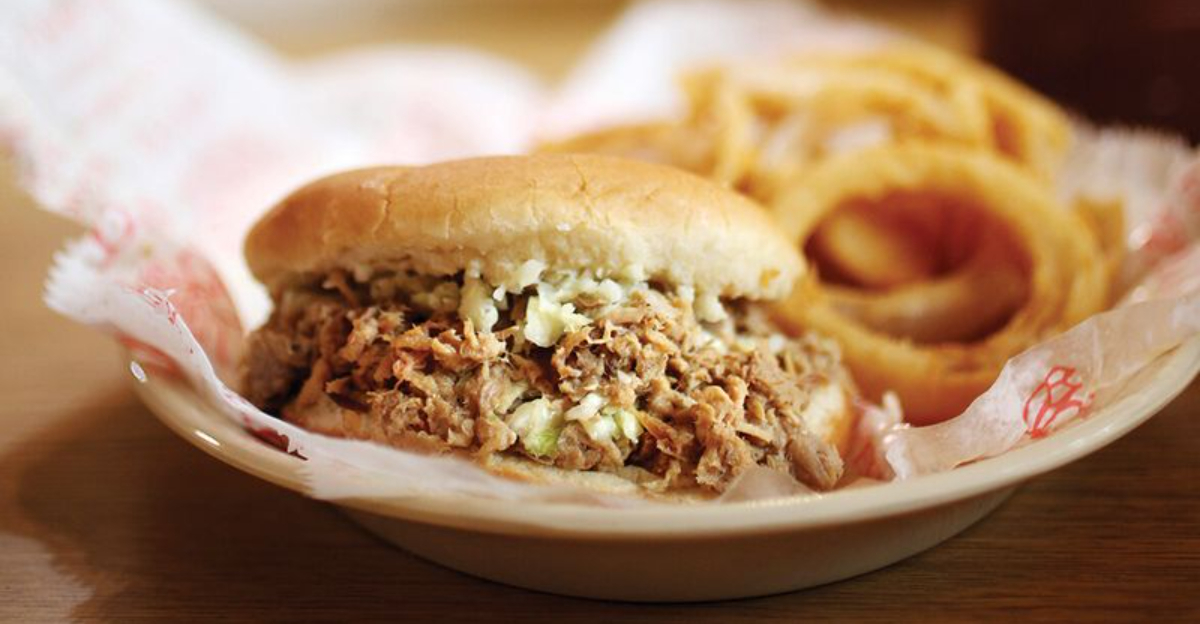7 North Carolina BBQ Styles That Outsiders Always Confuse (And Why It Matters)

Y’all, nothing riles up North Carolinians quite like barbecue.
As a born-and-raised Tar Heel, I’ve witnessed heated arguments at family cookouts over sauce preferences that nearly ended in cousins not speaking for months.
Our state’s BBQ tradition isn’t just food—it’s part of our cultural identity.
The problem? Folks from outside the state often lump all our distinct styles together, missing the rich history and regional pride behind each approach to the pit.
1. Eastern Whole Hog: The OG Pig Pickin’
My granddaddy would roll in his grave if he heard someone call anything else “real Carolina barbecue.” Eastern-style is our oldest tradition—cooking the entire pig slowly over hardwood coals until it reaches fall-apart perfection.
The sauce here is what startles outsiders. No tomato or ketchup in sight! Just vinegar (usually apple cider), red pepper flakes, and a touch of salt and sugar. The sharp tang cuts through the rich pork fat beautifully.
What makes this style special is how different parts of the pig bring different flavors to your plate. From tender ham to fatty shoulder to succulent belly—it’s a whole porcine experience. Restaurants serving authentic Eastern-style often host weekend “pig pickin’s” where the whole community gathers around the cooker.
2. Lexington-Style: The Shoulder Specialists
First time I visited Lexington, I nearly started a brawl by asking for coleslaw instead of red slaw with my sandwich. Rookie mistake! Western NC (particularly around Lexington) focuses exclusively on pork shoulder—no whole hog business here.
The signature touch? That reddish-brown sauce that makes my mouth water just thinking about it. It’s vinegar-based like Eastern, but with tomato ketchup added, creating a slightly sweeter, tangier profile that complements the smokiness of the meat.
Lexington-style joints serve their BBQ chopped or sliced on a bun with their famous red slaw (cabbage dressed with the BBQ sauce instead of mayo). The annual Lexington Barbecue Festival draws over 100,000 visitors, proving this style has serious staying power.
3. South Carolina Mustard Invasion
“Wait, isn’t this article about North Carolina BBQ?” I hear you asking. Exactly my point! One of the biggest mix-ups happens when people confuse our vinegar traditions with South Carolina’s mustard-based sauce.
The yellow gold sauce from across the border contains yellow mustard, vinegar, brown sugar, and spices. It creates a tangy-sweet flavor profile that’s delicious but distinctly NOT North Carolina style.
German immigrants who settled in South Carolina brought their love of mustard, influencing regional cooking. Despite being neighbors, this style represents a completely different BBQ tradition. Yet I can’t count how many times visitors have asked me where to find “that Carolina mustard sauce” while in Raleigh. The confusion drives local pitmasters crazy!
4. Piedmont Red Slaw Revolution
The humble side dish that divides our state! Last summer, my aunt and uncle stopped speaking for a week over which slaw belongs on a proper BBQ sandwich.
In the Piedmont region, red slaw reigns supreme. Unlike the mayo-based white slaw from Eastern NC, this cabbage is dressed with the region’s ketchup-vinegar BBQ sauce. The result is a zippy, tangy topping that adds crunch and acidity to rich pork.
Many outsiders don’t realize that asking for the “wrong” slaw in certain regions might get you politely educated or playfully mocked. The red slaw versus white slaw debate perfectly represents the east-west BBQ divide. Some innovative spots now offer both options, but traditionalists consider this BBQ blasphemy!
5. Eastern Regional Variants: The County-By-County Differences
Growing up in eastern NC, I learned that even within our vinegar kingdom, fierce local pride creates subtle but important differences. Drive 30 miles in any direction, and someone’s adding more pepper flakes or tweaking their cooking method.
Take Pitt County’s chopped BBQ versus the roughly pulled style preferred in Sampson County. Or the pepper-heavy sauce in some coastal communities compared to slightly sweeter versions inland.
These micro-regional differences might seem trivial to outsiders, but they reflect generations of family traditions. Local pitmasters guard their techniques zealously. When my neighbor tried to get Wilson’s famous Marvin’s BBQ recipe, the owner just laughed and said, “I’d sooner give you my social security number!” These subtle variations create a rich tapestry of flavors that reward the dedicated BBQ explorer.
6. The Hybrid Heresy: Mixed-Sauce Sandwiches
Confession time: I’ve committed what some consider BBQ sacrilege. At home, I sometimes mix eastern vinegar sauce with western ketchup-based sauce for my pulled pork sandwiches.
This hybrid approach is gaining popularity, especially in central NC cities like Raleigh, Durham, and Chapel Hill. Modern restaurants often offer both sauce styles, letting diners choose or even mix them. The combination creates a complex flavor profile that honors both traditions.
Purists from both eastern and western camps might call this an unholy alliance, but younger generations are embracing this flexibility. My BBQ-obsessed uncle calls it “diplomatic eating.” The hybrid approach represents evolving traditions while acknowledging our divided history. For visitors, it’s a perfect introduction to our state’s BBQ civil war without having to choose sides.
7. East Carolina Ribs: The Forgotten Tradition
“North Carolina isn’t rib country!” I’ve heard this misconception countless times. While whole hog and shoulder get all the glory, eastern NC has a unique rib tradition that deserves recognition.
Unlike the thick, sweet-glazed ribs popular elsewhere, our traditional ribs use that same peppery vinegar sauce as a mop during cooking. No sticky coating here—just clean pork flavor with a tangy kick. The technique produces a different experience: meat that pulls cleanly from the bone without being fall-off tender.
Small family operations in eastern counties still prepare ribs this way for special occasions. My great-uncle’s vinegar-mopped ribs were legendary at family reunions. Sadly, this style rarely appears on restaurant menus, making it increasingly unfamiliar even to North Carolinians. When visitors expect Memphis or Kansas City-style ribs, our vinegar-kissed version confuses their expectations.
